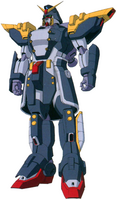kaiser (Mac Mini 2012)
Summary
It's a Mac Mini. More like a textbook than a mini, but still beats out the iMac for compactness.
Notes
- Installed Kingston SSD is older (no TRIM, probably relatively slow)
- I damaged the IR/LED board connector
- One bottom plate screw is non-original
Hardware
| Make | Apple |
| Year | 2012 |
| Model | Mac Mini A1347 |
| Chassis | Unibody Mac Mini |
| Processor | Intel Core i5-3210M |
| Memory | 16GB DDR3 1600 (2x ShareVDI 1.35V DDR3L) |
| Ports | 4x USB 3.0 |
| Firewire 800 | |
| Thunderbolt / Mini DislayPort | |
| HDMI | |
| 3.5mm Headphone / Optical Out | |
| 3.5mm Line In / Optical In | |
| RJ-45 LAN | |
| SD card slot | |
| Graphics | Intel HD Graphics 4000 |
| Storage | 240GB Kingston SV300S37A240G |
| Int. Peripherals | Broadcom USB Bluetooth |
| Apple BCM5701 Ethernet | |
| Apple Airport Extreme a/b/g/n (BCM43xx) | |
| Ext. Peripherals | - |
| Dimensions | |
| Length/Depth | 19.7 cm |
| Width | 19.7 cm |
| Height/Thickness | 3.6 cm |
| Weight | 1.2 kg (2 lbs 10 oz) |
Software
| Operating System | macOS Catalina (10.15.7) |
| Unique applications |
Log
Initial setup
Machine came with a fresh upgrade. Catalina had a bit weird volume layout. There were:
- Macintosh HD
- Macintosh HD - Data
- Macintosh HD - System
Something like that anyway. "Macintosh HD" seemed to be unnecessary. System pointed to the actual root, and Data was the Data volume. I removed the first "Macintosh HD" and renamed System to that. Seems more clear and works fine.
Tearing the machine down I forgot to disconnect the IR sensor and pulled the pins from their connector (fortunatley no damage to the surface mount connector). Only lost one pin retainer clip, and was able to reassemble without issue. The Wifi plate seems like a bad fit. Really had to work with it and the drive mount to get the screws in place. One of my bottom plate screws was missing and they are $$ for a tiny screw. I found a reasonable replacement in a bag of "Thinkpad" screws.
The SSD upgrade wasn't done that cleanly. I used some m3 grub screws and nuts to replace the missing post screws that hold the drive up. Now it sits straight and is held at both sides. Overall teardown is a bit finicky, but not overly complex.
Software setup
Mostly just installed brew. Grabbed a few apps off the app store.
Grabbing fonts from brew requires using a tap, then you can install as normal:
brew tap homebrew/cask-fonts
This command seemed to work to disable the boot chime:
sudo nvram SystemAudioVolume=%01
Catalina switched the default shell to zsh. They also are still on an ancient bash version. I grabbed bash from brew. Then it has to be added to the shell list:
/usr/local/bin/bash
Then to change shells for your user and root:
chsh -s /usr/local/bin/bash sudo chsh -s /usr/local/bin/bash
High Sierra on an external drive for 32-bit compatibility
I wanted to run an old copy of Rosetta Stone Russian (v4.0.12) on a desktop machine. I tried my powerbook G4, but it doesn't have the power to run things very smoothly. With Wine and Linux I hit a problem with internet access so the program would never start properly after install. Decided to throw an older release on external drive for easy booting.
I installed High Sierra by creating usb media, and a guide on macworld.co.uk. After installing High Sierra from the store I ran the createinstallmedia command.
sudo /Applications/Install\ macOS\ High\ Sierra.app/Contents/Resources/createinstallmedia --volume /Volumes/MyVolume
Installer failed to boot first try, but worked on a reboot. Reconfiguring as I like went fine based on my experience with the 2010 iMac which stopped at High Sierra. Got NFS up and running quickly. Had one hang during an update reboot, but it booted after a hard power-off.
Rosetta Stone complains about not being optimized for my Mac, but it's running fine. It does have an expired certificate.

